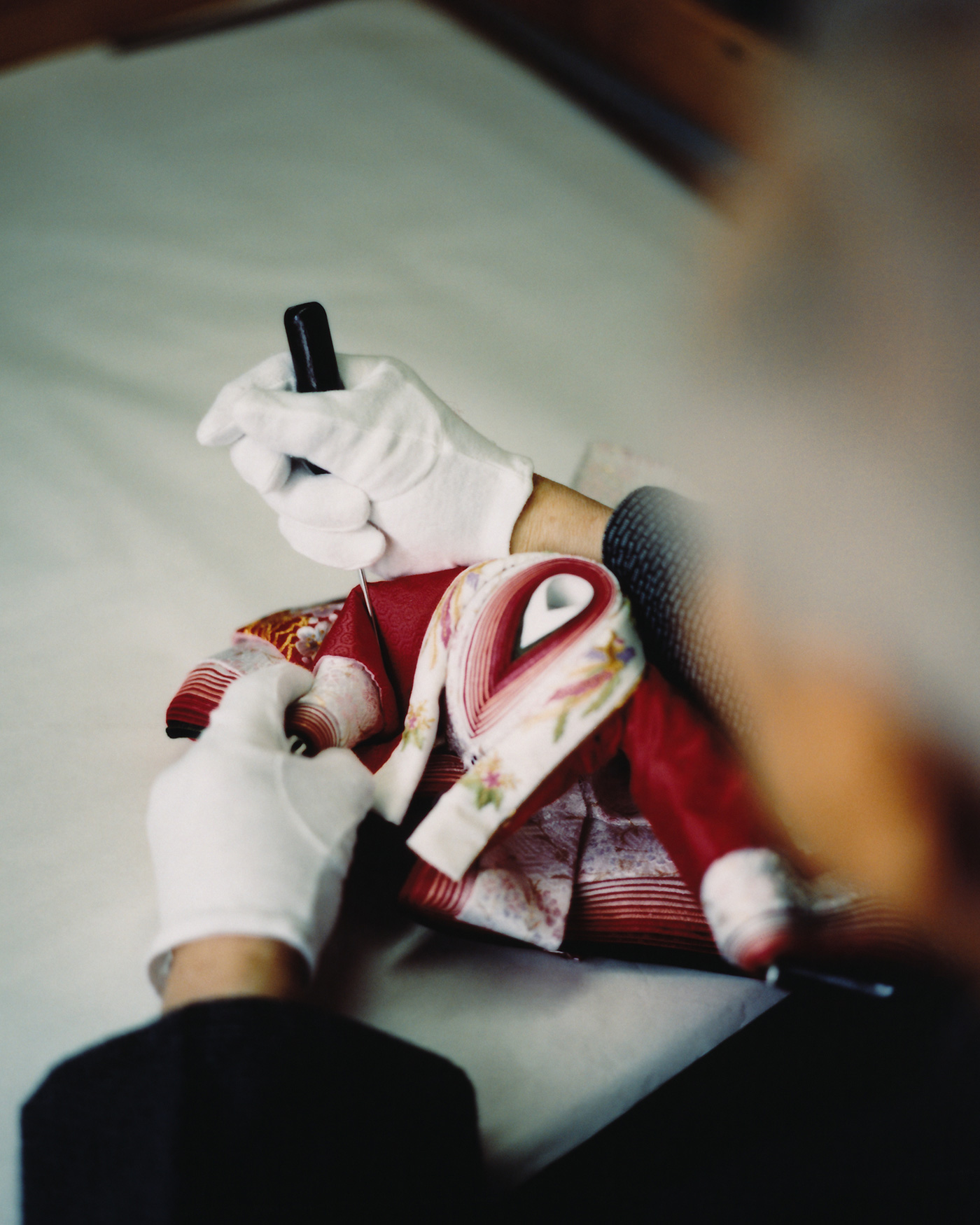Nagoya Butsudan
Marusue Butsudan Co., Ltd. has a history of about 100 years since its establishment in 1925 as a manufacturer and distributor of butsudan and butsugu (Buddhist altars and ritual articles) in Yatomi City, Aichi Prefecture. We interviewed Mr. Ito, a lacquer craftsman and the fourth generation of the company, who is ambitiously working on the lacquering of floats, portable shrines, and Japanese swords beyond the framework of the manufacture of butsudan and butsugu, in order to preserve the skills of Nagoya butsudan for future generations.

What was the history of your company before you became the fourth generation?
Marusue Butsudan was founded by the first generation under the name of Sue-moto Ito, who established a store called “Marusue” in Atsuta, Nagoya. There used to be many butsudan shops in Atsuta. Later, the second generation of Suehon’s son expanded to Yatomi, where the current store is located. In the old days, there was no Internet, so butsudan shops were community-based businesses, rooted in their respective areas. This area was home to many farmers, and many of them wanted luxurious butsudan (Buddhist altars), so the second generation decided to make this a new market and moved into the area.
I heard that Marusue Butsudan manufactures more than 100 butsudan a year, which is a very large number.
By 100, we do not mean 100 altars made from scratch, but 100 altars that we are involved with. Of course we make new butsudan, but we also “wash” old butsudan, which means we take them apart and repaint them. It is a very sustainable product that is not disposable.
And nowadays, there is more of a demand for restoration. We are a butsudan (Buddhist altar) shop, but at our factory, all we do is the lacquering process. The sales and scale of the lacquer coating craftsmen’s part are larger than the sales of butsudan altars.


What is the technique of lacquering?
First of all, lacquer is a natural paint. It is the sap of the lacquer tree. It is one of the most difficult paints to apply. Lacquer is a natural product, so each piece is different. Even the same “lacquer” is a little bit different, and it can be difficult to apply properly, and it is easily affected by the weather. For example, it is raining today, but lacquer dries very quickly on such days. If the humidity is high, it dries faster, and if it dries too quickly, it will fail. The surface of the lacquer dries too quickly and becomes wrinkled. The craftsmen have experience and techniques to prevent this from happening.
Is the “lacquering” business something that is mostly learned by experience?
Yes, I agree. There are no particular rules, but since it is basically a scientific matter, it is fine to take data. I prefer it that way. But for most craftspeople, experience, hands, and mouth are the main tools of communication.
When you hear the word “lacquer work,” you may think of a craftsman who does not touch the material with his hands, but this is a profession that places great importance on the sensations of the hands. Of course, we use a tool called a lacquer brush to apply the lacquer, but it is difficult to apply it with a thickness of 0.7 mm, for example. If you want to paint beautifully, you have to make the lacquer thicker. However, if the coating is too thick, the curing speed of the surface and the inside will be different, resulting in shrinkage, or wrinkling. On the other hand, if it is too thin, it doesn’t look good, so I want to get it just right, but that is something you can only learn from experience. I try a few times, and then I get up the courage to apply a thicker coat, and I think that in this kind of climate, I can apply this much lacquer. I accumulate such data in my mind. That kind of steady and time-consuming work is necessary.
It is a mixture of the logical part and the part that cannot be verbalized. It is easy to say in words, but it is very difficult to achieve it in actual operation. It also depends on a person’s physical and mental condition.

When we think of lacquer, we have an image of brown or black, but so many colors can be expressed.
That’s right. There is something called colored lacquer, which is made by mixing lacquer with pigments. Basically, if you are particular about the color, you can mix colors each time. However, we are not that strict. Lacquer is difficult to get the desired color. Basically, colored paints in the world are made by mixing transparent paint with something else, but lacquer is a slightly candy-like material to begin with.
So, I calculate that and brighten the color, but since there is no color number, it is difficult to express the color as it is specified by the computer. We adjust the technique, the color mixing, and the drying process to make the color as close to the ideal as possible.

Marsue Butsudan also makes sword sheaths, don’t they?
Yes. There is a technique called “Henka-nuri. Usually, lacquer coating is black and shiny, isn’t it? There is a technique called “Hen-nuri,” in which a glittering shell or a different material is embedded in the lacquer.
The sword sheath business started last year, but it was originally started by the president as a hobby, maybe 15 or 20 years ago. At that time, there was a part of the company that looked at me coldly. Everyone was busy, but the president was always touching a sword. There were times like that, but in the end, I am glad I did it. We had a lot of customers in Tokyo, and I would go there to sell our products, but it was interesting to hear about the overseas market from sword makers.







